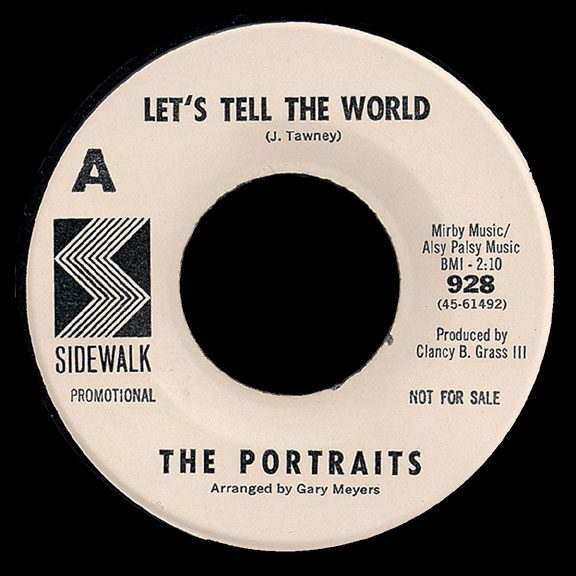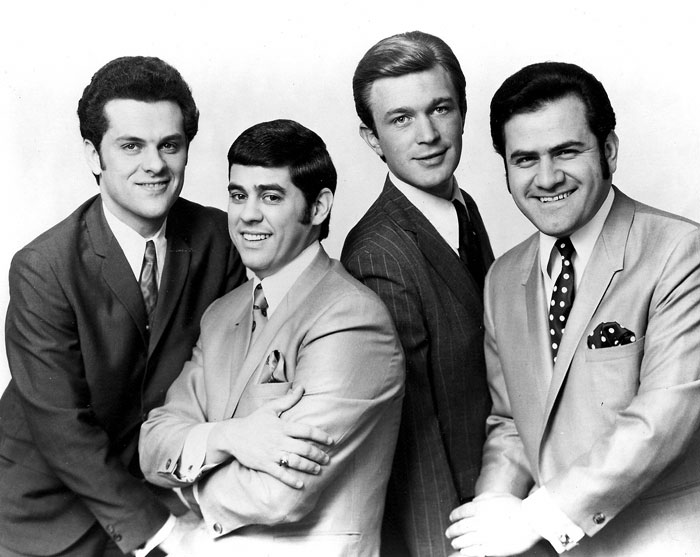
The Portraits, by Gary E. Myers
Milwaukee Roots
The Capitol, Liz, Nike, RCA, Sidewalk and Tri-Disc record labels all released singles by groups called the Portraits between 1959 and 1968; I was a member of the Portraits on Sidewalk.
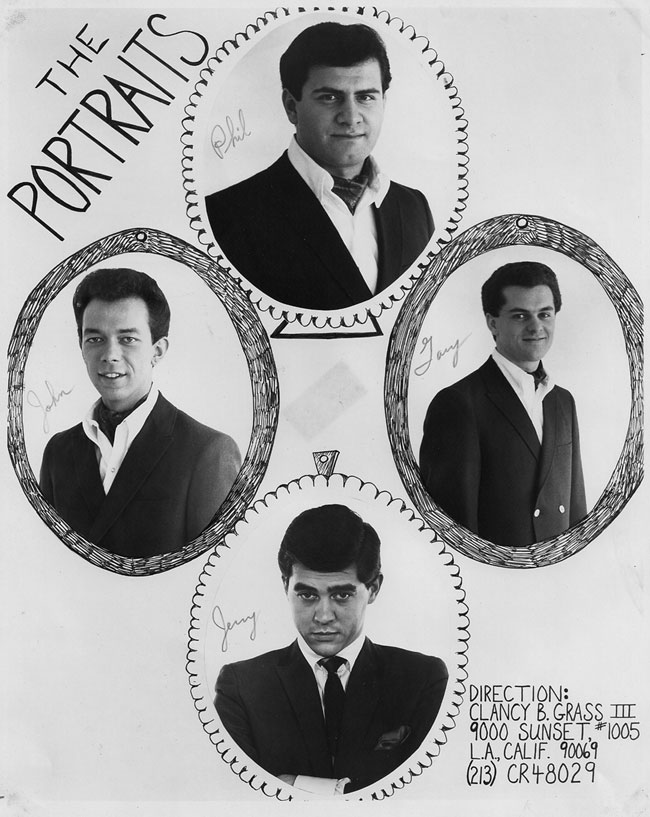
Nothing happened with the record, but the Mojo Men worked steadily in and around Milwaukee, along with gigs in Grand Rapids and Detroit. We backed Johnny Tillotson and Chuck Berry, and worked opposite Jerry Lee Lewis. In summer 1965 Doug Weiss was hit with a 30-day jail term (driving with a suspended license, I believe), so the Mojo Men had to make a move. Guitarist John Rondell (Beilfuss) and bassist Phil Alagna were looking for work, having returned from a Southern California trip along with singer Billy Joe Burnette. (Rondell and Burnette had also worked with Milwaukee’s Legends on their 1964 Florida trip). Duane Smith and Tom Hahn had begun to be at odds, so the Mojo Men let Hahn go and added Rondell and Alagna, expanding to five pieces when Weiss was released,
Move to Los Angeles
In August 1965 the Mojo Men relocated to the L.A. area. On the drive out we heard “Off The Hook” by another Mojo Men, but it didn’t chart nationally so we paid little attention to it. By October, however, that same San Francisco band did chart with “Dance With Me”. We were not happy about that, but the record only reached #61, so we took no action – except that an agent booked us on a few of their gigs. (We later learned that the record got airplay in Milwaukee on our reputation). Doug Weiss adopted the stage name of Doug Masters and left to join a Las Vegas style review. The Mojo Men briefly replaced him with Billy Joe Burnette and then Tim Welch, but Paul Stefan (Stefaniak), an excellent singer and another old friend from Milwaukee (where he had regional hits with the Royal Lancers and the Apollos), was also in the area. He joined around March 1966.
During a steady gig at the Tip Top in Inglewood we backed the Coasters, Penguins, Rivingtons, Dick & Dee Dee, and Jerry Wallace. The schedule included Friday and Saturday after-hours sessions where many musicians and music-biz people hung out, and we were getting a good local reputation. One of the frequent sit-in’s (possibly Bobby Mason) was a Mike Curb protégé and he convinced Curb to come and see us. Curb liked what he heard and we signed a record deal with him and a management contract with Clancy Grass, who had an office in Curb’s suite and some sort of connection with him.
This was not the most opportune time for the band to head back to the Midwest, but Smith’s wife was pregnant and wanted to be near her family back home, so off we went. By the end of the summer everyone but Smith was itching to be back in California; the four of us decided to make the move while Smith stayed. Phil Alagna became the new leader mostly by default, being the only one interested in handling the business aspect.
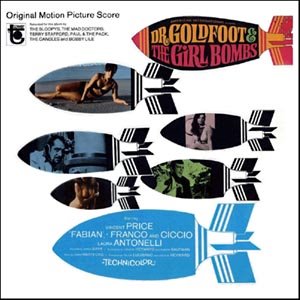
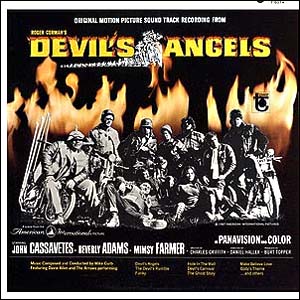 Name Changes
Name Changes
The Mojo Men went back into Curb’s studio, and returned to a five-piece lineup with the addition of another old Milwaukee friend, B3 player Pat Short (Cibarrich). John Rondell had written “Runaround Girl” and we cut it with Paul Stefan’s lead vocal. We also recorded the vocal for “Hiding From Myself”, a filler song for the Dr. Goldfoot & the Girl Bombs soundtrack LP. By this time (fall 1967) the San Francisco Mojo Men had hit Billboard’s top 40 with “Sit Down I Think I Love You”; now we needed to change our name. Stefan wanted it to be “Paul & the (something)”, so at a meeting in Mike Curb’s office, we began tossing out names. We thought it would be good to have another “P” word, and it got down to Paul & the Pack. I didn’t like it, but I was the lone dissenting voice so it won.
I had been a subscriber to Billboard Magazine for several years and, within a day or two of the Curb meeting, I discovered that “I (Who Have Nothing)” by Terry Knight and the Pack was edging its way up the Hot 100. This was no good! After our gig that night I began looking in the dictionary under “P” for another name. When I got to “picture” I noticed the synonym “portrait” and thought, “That’s it!” I called a couple of the guys at 3 AM (having just gotten off the gig at 1:45) and they agreed that Paul & the Portraits would be a good name. The next day I called Curb’s office and he understood, but said he had already ordered 20,000 record labels showing Paul & the Pack. So, the Dr. Goldfoot LP bills the Portraits as Paul & the Pack, while the photo on the back cover shows us holding a picture frame to go with the name Portraits. Members depicted (L-R) are Phil Alagna, Gary Myers, Paul Stefan, John Rondell and Pat Short.
Then came another typical 60’s setback – Paul got drafted. We did a few gigs, and even another recording session, as a four-piece band, but we were lacking a strong lead singer, and then Pat Short also left. Clancy Grass had previously managed singer Jerry Tawney, who had come to L.A. from West Virginia and released a 1966 single on Liberty. Tawney had since gone back to WV, but Clancy convinced him to return to the coast to join our band. We re-recorded “Runaround Girl” with Jerry and we did the vocal for “Devil’s Angels” (as “Jerry & the Portraits”) over the same track used for Davie Allan’s instrumental version. We also cut a remake of “A Million To One” along with one of Jerry’s songs, “Let’s Tell The World”.
Recordings
The Portraits always used much vocal harmony, influenced by the Four Seasons, the Happenings, the Buckinghams, Jay & the Americans, and others. Most of the band’s sessions began with a basic track of bass, guitar and drums (Phil, John and me), and then instrumental overdubs: Phil on piano or organ, John with a second guitar part, and I sometimes added acoustic rhythm guitar. On one or two sessions I added vibes, and we used studio horn men on a few songs. The four of us would lay down our background vocal parts and then double them before putting Jerry’s lead on top. Once, when John was gone, we used our friend Larry Carlton, who went on to become one of the top studio guitarists in the business. Phil Alagna and I also played on two sessions for the Mystic Astrologic Crystal Band, another group managed by Clancy Grass. The Portraits recorded several unreleased songs and we sang on a Curb-produced commercial that was never used.
The Four Seasons had hit with their update of Cole Porter’s “I’ve Got You Under My Skin” in 1966, and Jerry came up with the idea of re-doing “Over The Rainbow” in a similar fashion. We incorporated a bit of the arrangement from the Demensions’ 1961 hit, but added much of our own, along with the switch to the up-tempo rock beat. I did the group arrangement and studio guitarist/arranger Don Peake wrote the charts for the “sweetening” – French horn, chimes and strings.
The record was released December 1967 and everyone involved was excited about it. However, we were not happy about coupling it with “Runaround Girl”; we felt that both songs were A-sides. This turned out to be a valid belief, as each side got airplay in different areas. One or the other charted in several cities, but neither charted nationally. There was also some talk that December was not a good time to release it. Airplay was more limited that month because of Christmas music, and perhaps by January some stations would have already put it aside. The Portraits did a Beverly Hills show with Mike Clifford, Ian Whitcomb, Boyce & Hart, and Don & Goodtimes, and appeared on TV8 Dancetime in San Diego, but little else developed. The band probably should have toured, especially to the cities where the record was played.
In early 1968 John Rondell left to join a San Diego band and Stan Ray (Hartford) replaced him. Around March I saw a trade ad for the Schaefer Talent Hunt, a large advertising promotion seeking new talent to record the Schaefer Beer jingle in New York. Without even mentioning it to the other members, I filled out the entry blank and sent it along with our two Sidewalk singles. To my great surprise, a few weeks later I received a telegram stating that we were one of the 10 winners. We were flown to New York and, because our selection was based on our “Over The Rainbow” vocals (they didn’t know that we were a self-contained band), studio musicians (including noted drummer Mel Lewis) cut the tracks, which were arranged by Peter Matz in the style of our “Over The Rainbow” version.
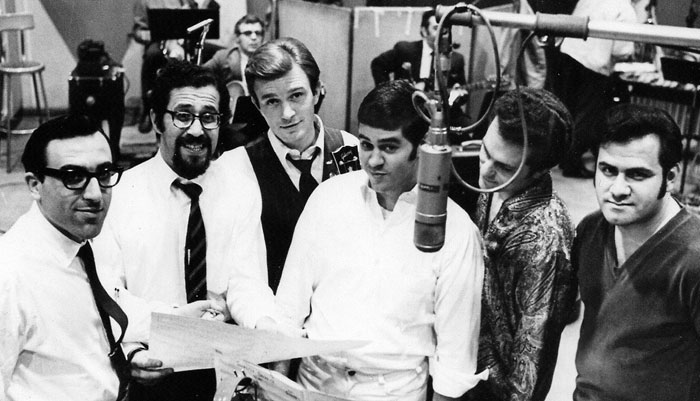
Beyond the 60’s
For the remainder of 1968 into 1969 the Portraits had a six-nighter at the Water Wheel in West Covina with little or no involvement from Clancy. However, we were still under contract to him and, when he learned of our beer commercial, he wanted a cut. We disagreed, but at some point, Jerry went back to him for more recording sessions without telling the rest of the band; the esprit de corps was fading. John Rondell had rejoined the band, but in August 1969 he and I left to join Duane Smith (original Cashmere’s leader from 1964), who now had a Nevada-based show group, the Cee & Dee Review.
The Portraits continued with more changes under Phil Alagna (now going as Phil Anthony). In December 1972, after I had left Duane Smith and worked many other gigs back in SoCal, I rejoined. The band had just joined forces with Sanetti & Rueda, a Stockton-based music/comedy team. Over the next few years we worked Reno and Lake Tahoe several times, along with Las Vegas and many other showrooms in California, Oregon and Arizona. I was replaced in March 1975 when a drummer who had previously worked with two of the other members was looking for work.
I continued playing full time in and around the greater L.A./Orange County areas until March 1982, and then joined a “casual” band led by Stan Ray, the guitarist from the Portraits’ beer commercial period. Phil Alagna kept the Portraits going through many more personnel shifts until that summer, when he disbanded the group and joined Stan and me on the casuals. By summer 1983 I was also doing occasional gigs as a leader, for which I exhumed the Portraits name. One day that summer, as a surprise to Phil and Stan, I called Jerry Tawney to see if he could come to our gig. He made it down and the four of us got together for the first time in 15 years.
Epilogue
Duane Smith, always a hard-working businessman, quit performing in the 80’s and opened a studio rental business in Portland, OR. That venture grew into West Coast Event Productions with major clients and a second office in Las Vegas.
Doug Weiss (Masters) gigged for many years in the Twin Cities and then returned to Las Vegas, where he was the Bobby Hatfield part of a Righteous Brothers tribute act. He died October 2007 (b: 8/3/42; Milwaukee).
Tom Hahn (b: 1939; Tipton, IN) had left the music business by 1970 and settled in Michigan.
Phil Alagna (b: 1943; Milwaukee) worked in piano sales and later as a piano tuner, while continuing to gig part-time. He was still playing in 2009 as the Phil Anthony Band, mostly for senior dances and functions.
John Beilfuss (Rondell) (b: 1945; Milwaukee) returned to Wisconsin in the 70’s and continued playing until 1996. He subsequently began a wedding photography business in the Eau Claire area.
Billy Joe Burnette had releases on many labels from at least 1965-79. He scored a big success in 1976 as the co-writer of Red Sovine’s “Teddy Bear” during the CB radio boom.
Tim Welch (b. 7/41; Wichita, KS and was shot & killed in W. Hollywood in 2/72) had previous releases on Edit and Reprise and a later release on Attarack.
Paul Stefaniak (Stefan) (b: 1941; Milwaukee) had rejoined the Portraits after his military duty, but left the music business by the mid-70’s. He was last known to be living in the Yuma, AZ area.
Pat Cibarrich (Short) had relocated to Louisville, KY in the late 60’s and subsequently returned to Milwaukee, continuing to play music. He died January 1998.
Jerry Tawney connected with writer/producer Jerry Fuller in the 70’s and had several solo releases on Bell. One of his songs appeared on Al Wilson’s La La Peace Song LP, and he was also in Yellow Hand on Capitol. Tawney left the music business in 1982 and became a mortgage loan consultant for Countrywide.
Stan Ray became a successful attorney in Los Alamitos, CA, specializing in estate planning.
Gary Myers (b: 1942; Milwaukee): I worked for a large music store in Arcadia, CA from 1985-2006, while continuing to play a variety of gigs in the greater L.A./O.C. area, including occasional work with Phil Alagna. As of 2009 I had written and self-published four books (see here for more information); still playing, and as recently as January 2008, had used the name “The Portraits”.

